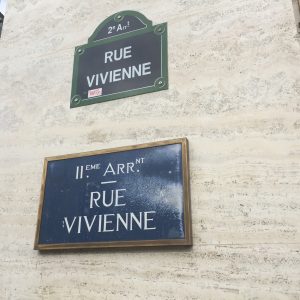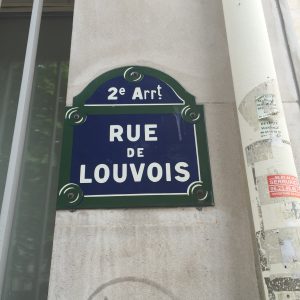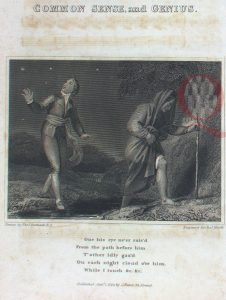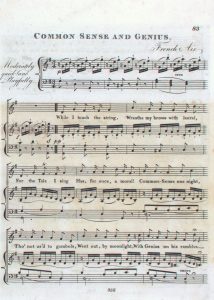In April/May I visited the Bibliothèque Nationale de France (BnF) to carry out archival research for project ERIN; this was my first visit to the BnF and I needed to visit the Music Department and Bibliothèque-Musée de l’Opéra sites. Things to note before you go! The BnF is comprised of five branches which are open to the public: François-Mitterand (the main site), Richelieu-Louvois, Arsenal and Opéra. The music department is located at the Richelieu-Louvois site; 2 rue de Louvois. Bourse is the closest metro stop.
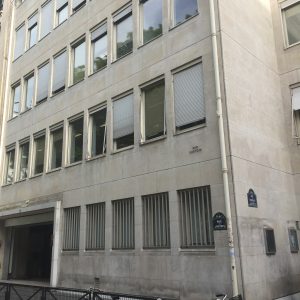
Bibliothèque de l’Opéra is located on the second floor in the Musée de l’Opéra, Palais Garnier, Place de l’Opéra. Closest metro stop Opéra. This library houses historic documents relating to the Opéra Paris. You access the library via the museum; use the main entrance which is on the corner of rue Scribe and rue Auber. If you hold a BnF reader’s card you are admitted for free and can take in a tour of this elegant and impressive museum on your way to the library. Since some sources are stored in cages in the main museum access to these may be limited, consequently I would advise contacting the library in advance to make sure you can access the material you want ‘on’ the day of your planned visit.
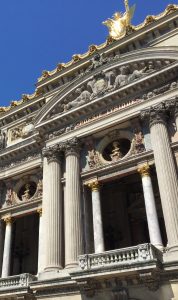
Prior to visiting the BnF I completed an online form outlining the purpose of my visit and when I intended to visit. You can access this form on the website and following its submission you should receive an email reply confirming your application and providing you with further information about admission. Prior to my visit I contacted the music department via email to make sure I could access all sources relevant to my research. Consult the BnF’s website for information about admission, reading room times, closure dates, branch locations, contact information and how to obtain a reader’s card; a link to the library’s homepage is provided at the end of this blog. I obtained my reader’s card from reader services (orientation des lecteurs) at the Richelieu branch.
This was most convenient for me as the Richelieu site is just across the road from the Louvois site. You can also obtain a reader’s card at the Francois-Mitterand site. Different types of cards are available depending on how long you need access to the library. A 15 day reader’s card costs €45 and was sufficient for the purposes of my research trip which was 10 days in duration. While at reader services you will be asked some questions about why you wish to visit the library. Once the process is complete you receive your card immediately. During my visit renovations were underway at the Richelieu site, consequently the entrance was located at 5 rue Vivienne.
The Music Department reading room is located on the fifth floor of the Louvois site. Lockers are available in the hallway, you are required to store your belongings (bags, coats etc.) here and due to security measures you may be asked to place any documents you wish to bring into the reading room into a clear plastic case. You will need a €1 or €2 coin for the lockers in the hallway. You may also use lockers available at the entrance to the reading room; no change is required for these. Once in the reading room you present your reader’s card at the information desk marked ‘Acceuil et Retours’, you are then allocated a seat number. Your reader’s card is kept at the desk until you return all items and are ready to leave the library. To order items you fill in a white call slip (Demande de document) and present it to the duty librarian (Président de la salle) who is seated at the desk marked ‘Renseignements’. There is an average wait time of about 10-15 minutes before your order is retrieved. You can order a maximum of ten items at one time. Items with a call number beginning ‘RES’ are ‘Réserve’, to order these items you fill in a blue call slip (Demande de communication d’ouvrages de la réserve), you are required to consult ‘d’ouvrages de la réserve’ at specially designated tables, these items must be returned by 5pm. You can hold items for up to a week by filling in a yellow coloured ‘mis de côté’ form. If a document is available on microfilm you might not be given access to the original, or you may be required to first consult the microfilm copy. Access to original documents is at the discretion of the duty librarian (Président de la salle) and this request is considered on a case by case basis. Luckily I was allowed to consult all original documents while researching in the music department; my case was strengthened by the fact that I needed to ascertain if watermarks were evident on sources, consequently examination of the original documents was paramount to my research. If you need to leave the library temporarily, during the course of the one day, you fill in a blue coloured temporary leave form (Laissez-passer de sortie temporaire). All items are returned to the ‘Acceuil et Retours’ desk.
Facilities in the music department reading room include 4 PCs with internet access, 4 microfilm machines and copying facilities. There is a card catalogue available but wi-fi was not available to readers. You may take photographs of sources with a camera or camera phone provided they are not for publication. Information about purchasing images for publication is available on the BnF website. If you plan on spending a full day at the Louvois it is worth noting that there is no café onsite. However there are a number of nice cafés dotted along rue de Vivienne; I recommend Le Pain de la Bourse, they do an amazing cappuccino which will boost energy levels for an afternoon of researching!!!! Otherwise there are a number of coffee and snack vending machines located on various floors in the Louvois.
To access the Bibliothèque de l’Opéra go to the second floor of the museum, go left, then right and you will pass through a corridor displaying the contents of the library’s collection. At the end of the corridor you will find the entrance to the library, on your left. Ring the bell located to the top left of the big wooden doors marked “Bibliothèque”. Lockers are provided adjacent to the entrance and facilities include two microfilm machines and various card catalogues. The reading room is very ornate and bright. Three unlabelled portraits are displayed in the reading room, presumably depicting various performers of note. There is a restaurant onsite and there are many cafés and restaurants located nearby in Place de l’Opéra. If you can, I would recommend making an effort to speak and correspond with library staff in French, this will make a good impression. I found the staff at the music department and Bibliothèque de l’Opéra to be most helpful and tolerant of the fact that I am not a native French speaker. This research trip did however afford me to the opportunity to quickly revise my French speaking skills – as they say – it was like riding a bike!
This research trip was kindly and generously funded by an RIA Charlemont Grant.

